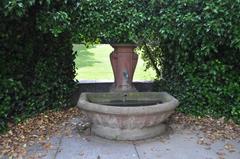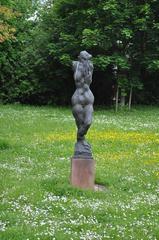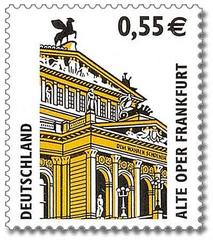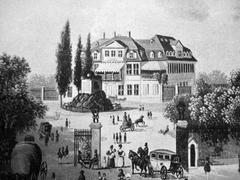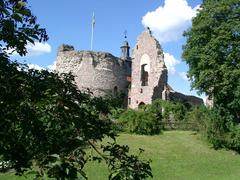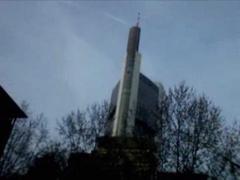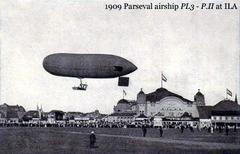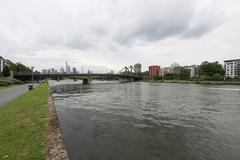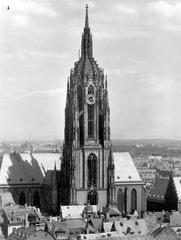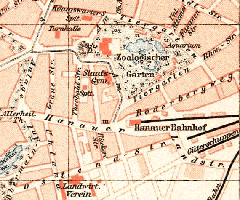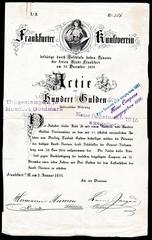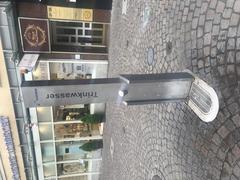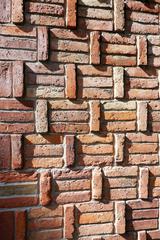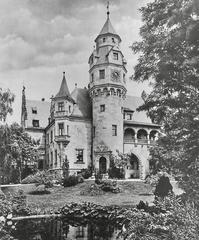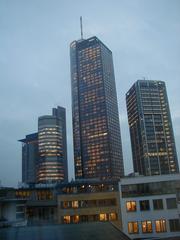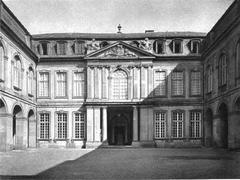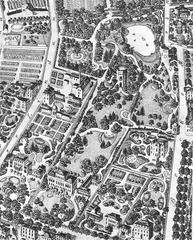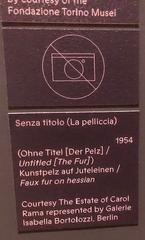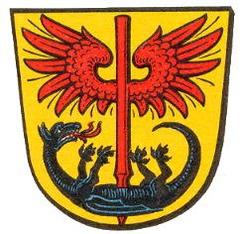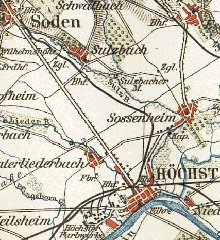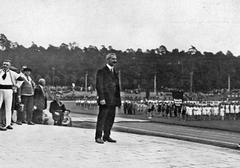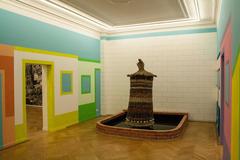
Visiting Deutschordenshaus: Tickets, Hours, and Historical Insights
Date: 01/08/2024
Introduction
Nestled in the heart of Frankfurt am Main, the Deutschordenshaus, also known as the House of the Teutonic Order, stands as a testament to the rich historical tapestry of Europe. This site, originally established during the medieval period, offers a fascinating glimpse into the past, encompassing the architectural grandeur and cultural significance of its time. Founded by the Teutonic Order in the late 12th century, the Deutschordenshaus was part of a network of commanderies that played a crucial role in both religious and social spheres. The Teutonic Order was initially formed during the Third Crusade to aid Christians on their pilgrimages and establish hospitals (Wikipedia). Over the centuries, the building has witnessed significant historical events, from the Reformation to the Napoleonic Wars, and has undergone several architectural transformations, reflecting Gothic, Renaissance, and Baroque influences. Today, the Deutschordenshaus is a cherished landmark, drawing history enthusiasts, architecture aficionados, and curious travelers alike. This comprehensive guide provides an in-depth look at its history, visiting hours, ticket prices, and tips to enhance your visit, ensuring a memorable and enriching experience.
Table of Contents
- Introduction
- Early Beginnings and Establishment
- Medieval Significance
- Architectural Evolution
- Role in the Holy Roman Empire
- Impact of the Reformation
- Napoleonic Era and Secularization
- Modern Era and Restoration
- Cultural and Historical Significance
- Visitor Information
- Visitor Tips
- FAQ
- Conclusion
Exploring Deutschordenshaus: History, Visiting Hours, and Tips for Your Visit
Early Beginnings and Establishment
The Deutschordenshaus, also known as the House of the Teutonic Order, has a rich history that dates back to the medieval period. The Teutonic Order, a Catholic religious order founded in the late 12th century, established the Deutschordenshaus in Frankfurt am Main as part of their network of commanderies across Europe. The order was initially formed during the Third Crusade to aid Christians on their pilgrimages to the Holy Land and to establish hospitals.
Medieval Significance
During the medieval period, the Deutschordenshaus played a crucial role in the religious and social life of Frankfurt. The Teutonic Order was not only a military organization but also engaged in charitable activities, including the establishment of hospitals and care for the sick and poor. The Deutschordenshaus served as a center for these activities, reflecting the order’s commitment to both martial and humanitarian missions.
Architectural Evolution
The architecture of the Deutschordenshaus has evolved significantly over the centuries. Initially constructed in the Gothic style, the building has undergone numerous renovations and expansions. The original structure featured typical Gothic elements such as pointed arches, ribbed vaults, and flying buttresses. Over time, Renaissance and Baroque influences were incorporated into the design, reflecting the changing architectural trends and the order’s growing wealth and influence.
Role in the Holy Roman Empire
The Deutschordenshaus held a prominent position within the Holy Roman Empire. As a commandery of the Teutonic Order, it was part of a larger network that extended across the empire and beyond. The order’s members, who were often of noble birth, played significant roles in the political and military affairs of the empire. The Deutschordenshaus served as a meeting place for these influential figures, further cementing its importance in the region.
Impact of the Reformation
The Protestant Reformation in the 16th century had a profound impact on the Deutschordenshaus and the Teutonic Order as a whole. The order, which was staunchly Catholic, faced significant challenges as Protestantism spread across Europe. In many regions, the order’s properties were confiscated, and its influence waned. However, the Deutschordenshaus in Frankfurt managed to survive these tumultuous times, albeit with reduced power and resources.
Napoleonic Era and Secularization
The Napoleonic Wars and the subsequent secularization of church properties in the early 19th century marked a turning point for the Deutschordenshaus. In 1806, Napoleon I dissolved the Holy Roman Empire and reorganized the political landscape of Europe. The Teutonic Order’s properties, including the Deutschordenshaus, were secularized and transferred to the state. This period saw the end of the order’s direct control over the building, which was repurposed for various secular uses.
Modern Era and Restoration
In the modern era, the Deutschordenshaus has undergone extensive restoration efforts to preserve its historical and architectural significance. The building, which had suffered damage during World War II, was meticulously restored to its former glory. Today, it stands as a testament to the rich history of the Teutonic Order and its enduring legacy in Frankfurt.
Cultural and Historical Significance
The Deutschordenshaus is not only an architectural landmark but also a symbol of the historical and cultural heritage of Frankfurt. It represents the city’s medieval past and its connections to the broader European history. The building is a popular tourist attraction, drawing visitors who are interested in exploring its historical significance and architectural beauty.
Visitor Information
Visiting Hours
The Deutschordenshaus is open to visitors from Monday to Saturday, 10:00 AM to 6:00 PM. It is closed on Sundays and public holidays.
Ticket Prices
- Adults: €10
- Students and Seniors: €7
- Children under 12: Free
Accessibility
The Deutschordenshaus is wheelchair accessible. Elevators and ramps are available to ensure that all visitors can explore the building comfortably.
Special Events and Exhibits
The Deutschordenshaus often hosts special events and exhibits related to the Teutonic Order and the history of Frankfurt. Check the official website for the latest information on upcoming events and exhibits.
Visitor Tips
For those planning to visit the Deutschordenshaus, here are some tips to enhance your experience:
- Guided Tours: Consider taking a guided tour to learn more about the history and significance of the building. Many tours offer in-depth insights into the Teutonic Order and the architectural evolution of the Deutschordenshaus.
- Museum Exhibits: The Deutschordenshaus often hosts museum exhibits that showcase artifacts and documents related to the Teutonic Order and the history of Frankfurt. Check the schedule in advance to see if there are any special exhibits during your visit.
- Photography: The architectural details of the Deutschordenshaus make it a great subject for photography. Be sure to bring your camera and capture the intricate designs and historical ambiance of the building.
- Nearby Attractions: The Deutschordenshaus is located in the heart of Frankfurt, close to other historical landmarks such as the Römer and Frankfurt Cathedral. Plan your visit to include these nearby attractions for a comprehensive exploration of the city’s history.
FAQ
What are the visiting hours of the Deutschordenshaus?
The Deutschordenshaus is open from Monday to Saturday, 10:00 AM to 6:00 PM. It is closed on Sundays and public holidays.
How much are the tickets for visiting the Deutschordenshaus?
- Adults: €10
- Students and Seniors: €7
- Children under 12: Free
Is the Deutschordenshaus accessible for visitors with disabilities?
Yes, the Deutschordenshaus is wheelchair accessible with elevators and ramps available.
Are there any special exhibits or events at the Deutschordenshaus?
Yes, the Deutschordenshaus often hosts special events and exhibits. Check the official website for the latest information.
Conclusion
The Deutschordenshaus in Frankfurt am Main is a historical gem that offers a glimpse into the medieval past and the enduring legacy of the Teutonic Order. Its architectural beauty and rich history make it a must-visit destination for anyone interested in exploring the cultural heritage of Frankfurt. Whether you are a history enthusiast, an architecture aficionado, or simply a curious traveler, the Deutschordenshaus promises a memorable and enriching experience. Plan your visit today and immerse yourself in the captivating history and culture of Frankfurt am Main (Time Out).


